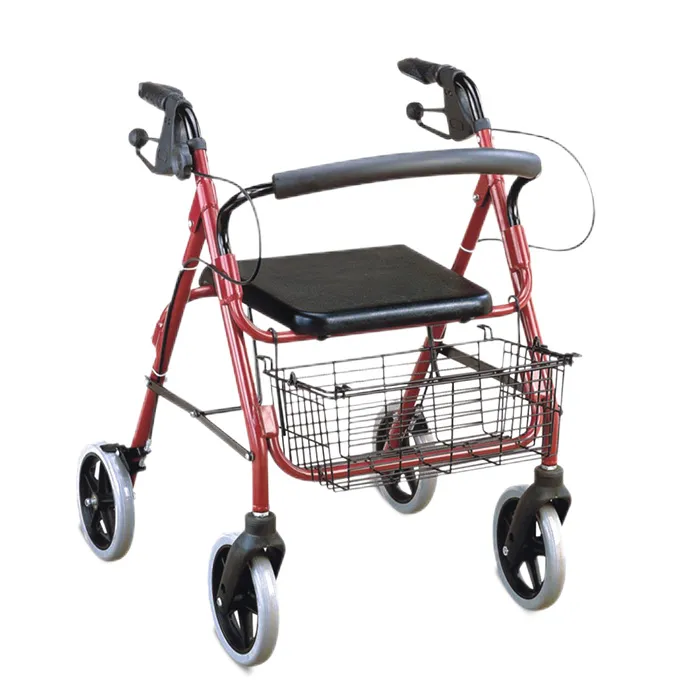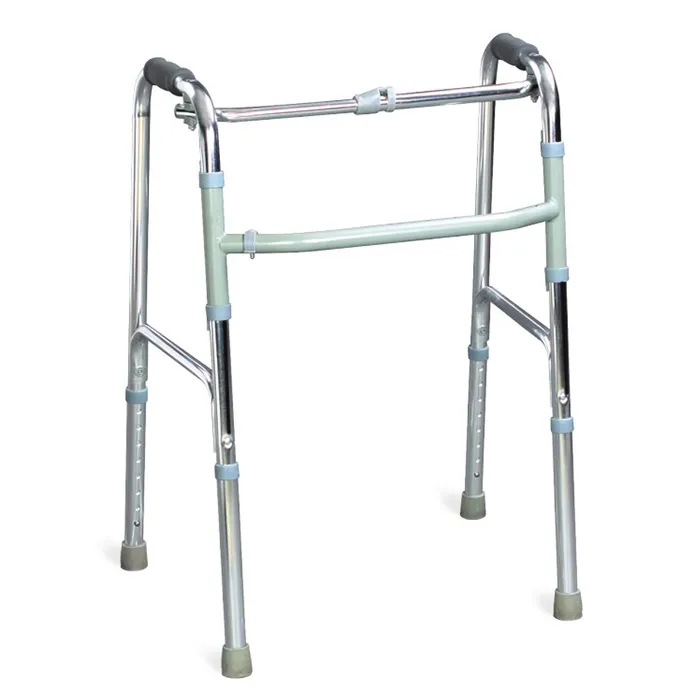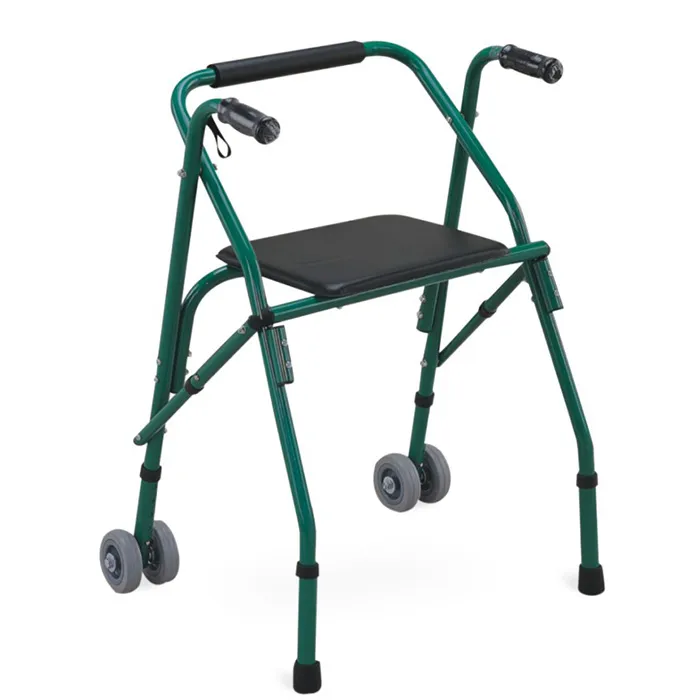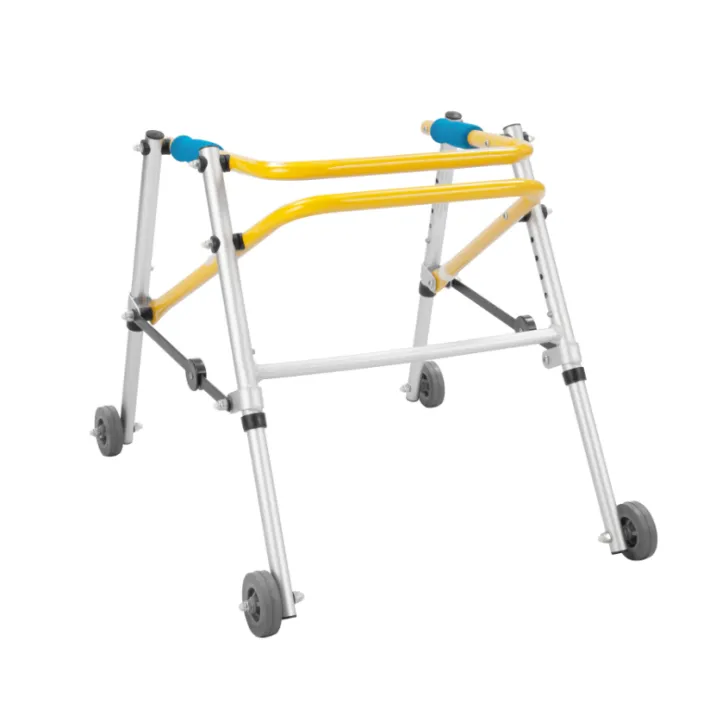In order to improve the independence of the elderly, ensure safety and improve mobility, zimmer frame walkers have become an indispensable life-assisting tool for many elderly people. There are many types of walking frames on the market, and each type of walking frame has its own specific design and function. For the elderly, choosing a suitable walking frame is crucial, which directly affects the elderly's walking comfort, freedom of movement and safety.
This article will explore in depth the most suitable types of walking frames for the elderly, including their applicable scenarios, advantages and disadvantages, and how to choose a suitable walking frame according to different needs.

What is the role of a walking frame?
A walking frame is an assistive device specifically designed to help patients or elderly people with limited mobility walk. It usually consists of a frame, a support part (such as a handle, a seat, etc.), wheels, etc. By providing additional support, a zimmer frame walker can reduce the burden on the human body and help the elderly overcome the inconvenience of movement. Different types of walking frames differ in structure and function, so they are suitable for different degrees of mobility impairment and different environmental needs.
The main functions of walking frames include:
● Improve stability: By adding support points, zimmer frame walkers help the elderly maintain balance and reduce the risk of falling.
● Reduce physical burden: When walking, zimmer frame walkers can share part of the body weight and reduce the pressure on the legs and knee joints.
● Provide psychological support: Walking frames can enhance the confidence of the elderly and make them feel more at ease when moving.
● Increase activity independence: After using zimmer frame walkers, the elderly can carry out daily activities more independently and improve their quality of life.

What are the common types of walking frames?
The most suitable types of walking frames for the elderly are:
1. Four-legged walking frame (standard walking frame)
2. Wheeled walking frame (wheeled walking frame)
3. Walking stick
4. Rollator
The elderly can choose the most suitable walking frame according to their mobility, needs and living environment.
1. Four-legged walking frame (standard walking frame)
The four-legged walking frame is the most common type of walking frame. It consists of a metal frame and four supporting legs, usually without wheels, and is suitable for elderly people who need stable support but have a more stable gait. The main feature of the four-legged walking frame is that it provides very stable support. When using it, the patient needs to lift the walking frame and move it forward.
Advantages of the four-legged walking frame:
● Strong stability: The support provided by the four supporting points is very strong, which can effectively reduce the risk of tilting and falling when the elderly walk.
● Wide range of applications: Suitable for all kinds of environments, whether indoors or outdoors, it can provide reliable support.
● Simple structure: The four-legged zimmer frame walker is simple in design and easy to operate. The user only needs to lift it and push it forward.
Disadvantages of the four-legged walking frame:
● Need to be lifted: The user needs to lift the zimmer frame walker when walking and then push it forward, which requires a high level of physical strength for the elderly, especially for those with weaker strength. There may be certain difficulties.
● Poor flexibility: Due to the lack of wheels, the four-legged walking frame has poor flexibility, and the user needs more strength to push it.
Four-legged walking frame is suitable for the following people:
● Suitable for elderly people who have unstable gait but can still lift the zimmer frame walker.
● Suitable for elderly people who need to use it in a more stable environment indoors.
2. Wheeled walking frame (wheeled walking frame)
Compared with the four-legged walking frame, the wheeled walking frame has more wheels, usually with a two-wheel or four-wheel design. Its wheels allow users to push the wheeled walking frame when walking, without having to lift it every time, reducing physical exertion during use. Wheeled zimmer frame walkers are usually suitable for elderly people with unstable gait but can bear a certain weight.
Advantages of wheeled walking frames:
● Reduce physical burden: Because it is equipped with wheels, users do not need to lift the zimmer frame walker, just push it lightly, which greatly reduces physical exertion.
● Higher flexibility: The wheeled design makes the walking frame more flexible, especially suitable for elderly people who need to walk indoors or in small spaces.
● Strong adaptability: The wheeled walking frame with a four-wheel design can better adapt to different ground environments, especially for elderly people with minor disabilities.
Disadvantages of wheeled walking frames:
● Poor stability: Although wheeled walking frames are flexible and convenient, their stability may not be as good as four-legged walking frames in some cases due to their lightweight design.
● Braking issues: Most zimmer frame walkers with wheels are equipped with a braking system, but in some low-quality products, the braking system may not be strong enough and may easily slip or become unsafe.
Suitable people for wheeled walking frames:
● Suitable for elderly people who have an unstable gait but need greater flexibility and less physical exertion.
● Suitable for elderly people who use indoors or in flat environments.

3. Walking stick
The walking stick is a lighter walking tool, usually suitable for elderly people who need slight support. The design of the walking stick is relatively simple, consisting of a long pole and a rubber pad at the bottom. It is suitable for elderly people who have difficulty in moving but can still maintain balance.
Advantages of the walking stick:
● Lightweight: The walking stick has a simple and lightweight structure, which does not increase the burden when used by the elderly and is easy to carry.
● Cheap price: Compared with other types of walking frames, walking sticks are usually cheaper and suitable for elderly people with limited budgets.
● Easy to store: Walking sticks take up less space and are suitable for elderly people who need to travel frequently.
Disadvantages of walking sticks:
● Weak support: The support of walking sticks is not as good as other types of zimmer frame walkers, and cannot provide strong stability. It is suitable for elderly people who need less support.
● Not suitable for people with severe mobility impairments: For elderly people who need more support and help, the support and stability of walking sticks may not be enough.
People suitable for walking sticks:
● Suitable for elderly people who are relatively free to move but need a small amount of support.
● Suitable for elderly people with good physical strength, stable gait but occasionally feel unbalanced.
4. Rollator
The rollator is a more complex and stable device than the wheeled walking frame. It is usually equipped with seats, handrails, brakes, etc., and its design is more in line with the daily needs of the elderly. In addition to helping walking, the rollator can also provide a place for tired elderly people to rest. It has four large wheels and is suitable for the elderly who need greater support and more safety.
Advantages of the walker:
● Strong support: The walker provides very strong support through four large wheels and a stable frame design, ensuring that the elderly are more stable during use.
● Versatility: In addition to being a walking aid, the walker is usually equipped with a seat, so the elderly can sit down and rest at any time during use, which is very suitable for long-term walking or going out.
● Applicable to a variety of environments: The four wheels of the walker make it very suitable for different types of ground, suitable for indoor and outdoor environments.
Disadvantages of the walker:
● Large size: The walker is relatively bulky due to its large and complex design, and requires more space for transportation and storage.
● More complicated operation: Compared with other types of zimmer frame walkers, the operation of the walker is slightly more complicated, and certain skills and experience are required when using it.
Suitable people for the walker:
● Suitable for the elderly who need more support and strong support, especially those who rely on the walking frame for a long time.
● Suitable for the elderly who need to rest or go out for a long time.

How to choose a suitable walking frame?
Choosing a suitable walking frame needs to be determined based on the elderly's physical condition, mobility and daily living environment. Here are a few key factors:
1. Mobility: If the elderly can walk on their own but feel unstable, a walker or wheeled walking frame may be a better choice.
If the elderly have great difficulty in moving and even need stronger support, a rollator or a four-legged zimmer frame walker may be more suitable.
2. Environmental factors: If the elderly mainly use the zimmer frame walker indoors and the environment is relatively flat, a four-legged walking frame or a wheeled walking frame can meet the needs.
If the elderly need to move outdoors or face uneven ground, a rollator will provide greater stability and support.
3. Safety and comfort: For elderly people with higher safety needs, rollators and wheeled walking frames are suitable for those who need more help due to their stronger support and safety.
4. Physical exertion: For elderly people with weaker physical strength, a wheeled zimmer frame walker or rollator can reduce physical exertion and make walking easier.

